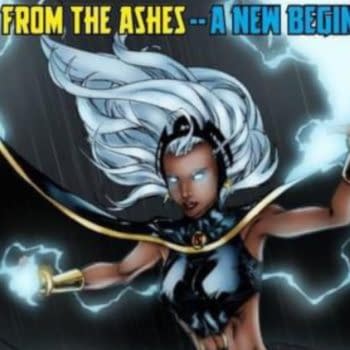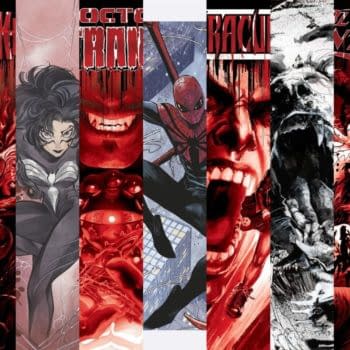Posted in: Recent Updates | Tagged: dennis o'neil, denny o'neil, how to write comics and graphic novels, How to write comics and graphic novels by Dennis O'Neil
How To Write Comics And Graphic Novels by Dennis O'Neil #14 – Serial Killers

If you're a relatively young –person—what my generation refers to as a whippersnapper—comic book stories have always been serialized because, of course, nothing really happened before you were born. But to your elders…'t'ain't necessarily so. In fact, until the great Julius Schwartz began his annual custom of conflating early superheroes with their contemporary counterparts in two-part stories that ran in The Justice Society of America, and equally great Stan Lee made continued stories an element of Marvel Comics, there were no serials in comics. (Well, okay, you purist way in the back there—there was one that I can think of: Monster Society of Evil that ran for two years—two years!—in Captain Marvel Adventures in the 1940s. Call it an anomaly, or the rule-proving exception. Satisfied?)
Now, though, serials are business very much as usual, and this is a mixed blessing. On one hand, they allow for complex plots. On the other, they seem too encourage sloppy technique—characters and conflicts not established or reestablished and a slow plod toward a climax that may not be known to the writer when he begins the project. And, because of publishing realities, our scribe may not have the luxury of rewriting when he belatedly realizes that he has problems.
What's a fella to do?
A few suggestions:
If possible, don't begin with a decision to fill a certain number of page/issues, and then wonder what to fill them with. Instead, start with the story and then figure out how much space you'll need to tell it. Some guesswork is implicit here, but let's not have the whole shebang guesswork.
There should be a major change, development or reverse in every installment. Don't just show us your characters unless we get to see them moving the plot along.
Have a destination in mind before you take the first step. I don't want to be overly doctrinaire about this. As your story progresses, you may have second/third/fourth thoughts about how it might best conclude, and you might be able to shape the narrative to accommodate the new brainstorm(s). But unless you have planned some destination, aren't you afraid you might flounder? I mean…Columbus never got to the Indies, but he wouldn't have gotten anywhere if he hadn't been looking for them.
If you're doing a miniseries, or a story arc in an ongoing title, it might be a good idea to end each installment with a reason for the reader to pick up the next: unanswered question, maybe, or a good, old-fashioned cliff-hanger. ("Egad! Lois was in the car when it exploded…! Surely not even the Man of Steel can save her now!")
Don't leave your reader wondering who this guy is, or where the action takes place. Be clear, and if some crucial character or element hasn't appeared in a while, reintroduce it. Those readers are putting your kid through college—not nice to annoy them.
There is abroad in the land a strange hybrid of serial and complete-in-one episode story. You might see an example on television today, or even see it discussed here next week.
Dennis O'Neil teaches a ten week course on Writing Comics And Graphic Novels at the New York University. Classes are every Wednesday evening from 6.45pm to 9pm. For further information, please call NYU's School of Professional and Continuing Studies at Studies at 212 9987200











